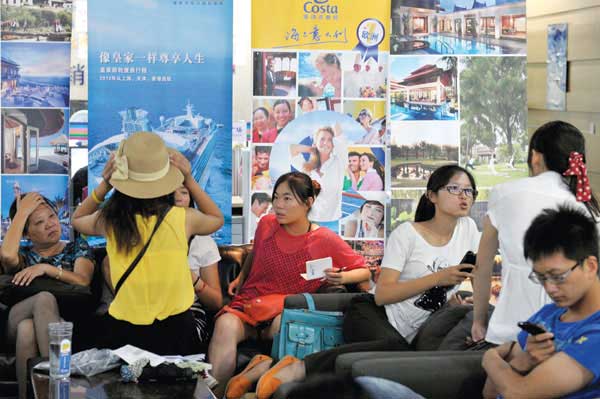
China outbound tourists on average spent RMB 20,000 (US$3,252) during travel per person and shopping is an important part of their spend in oversea trips (57.8%), according to a report released at Beijing Fragrant Hills Tourism Summit, organized by World Tourism Cities Federation (WTCF).
Outbound Chinese Tourists Love Shopping
Chinese tourists came out tops again as the world’s biggest tax free shoppers in 2011 who chalked up more than US$2.3 billion in tax free shopping transactions. Each Chinese shopper’s tax-free average spend more than US$1,041 per person, which was much higher than their Japanese US$681 and Russian (US$461) counterparts.
Australia is the latest country trying to attract well-heeled Chinese travellers, and has launched a new $250 million dollar advertising campaign including new broadcast, print and digital advertising showing key attractions such as the Bungle Bungles, Lizard Island and Uluru. That makes sense as China is now the second most popular source country for visitors to Australia, following New Zealand with 1.2 million trips from across the Tasman in the last financial year according to the Australian Bureau of Statistics.
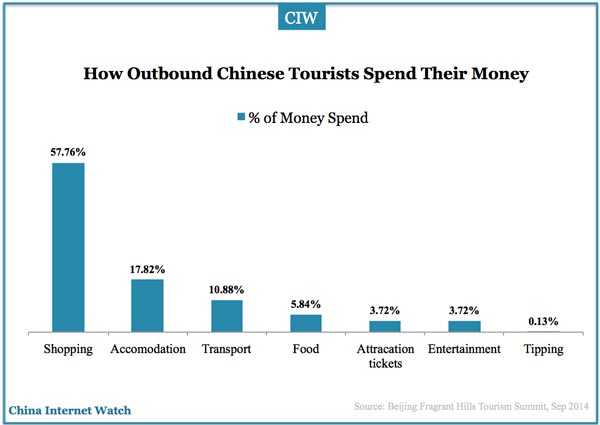
China outbound travelers spent a total amount of $128.7 billion during their trips overseas in 2013, an increase of 26.8% YoY according to the WTCF report. 43.93% surveyed traveled overseas for the purpose of shopping. On shopping of luxury products, Chinese travelers tend to make the purchase in oversea trips. In addition to Hong Kong and Macau (26%), Europe (23%) and US (10%) became the important destination of Chinese travelers for shopping.
Related: What International Hotels Need to Know About Chinese Travelers
Demographics of Chinese Outbound Travelers
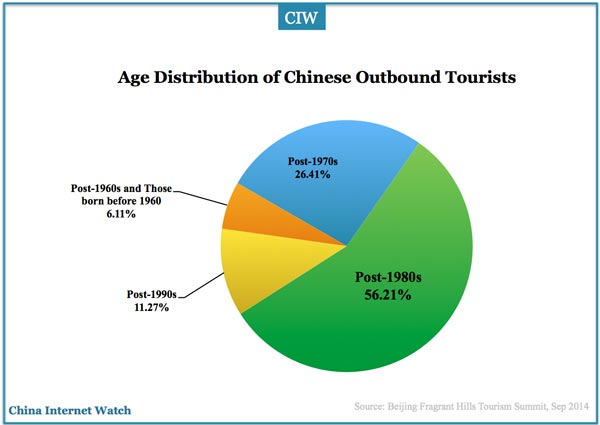
China’s outbound travel market reached 98.19 million person trips in 2013, with an increase of 18% YoY. Primary outbound travelers in China came from Shanghai, Guangdong, and Beijing, followed by coastal provinces such as Jiangsu, Zhejiang and Shandong. Over 56% are post-80s, followed by post-70s (26.4%) and post-90s (11.3%).
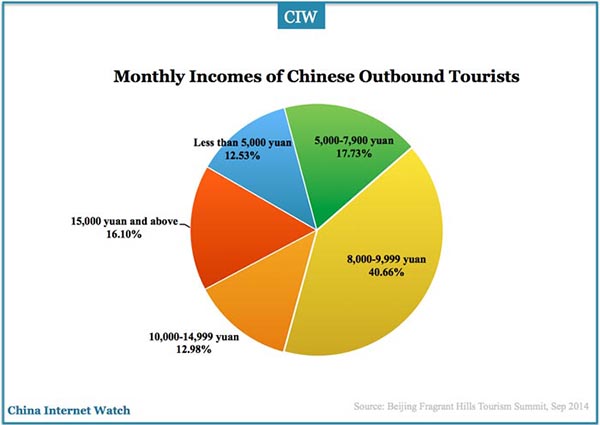
The average monthly income of China’s oversea travelers is RMB 11,512 (US$1,872), which is three times of the average income in mid-size and large-size Chinese cities in 2013. And, the average monthly family income is RMB20,767 (US$3,377).
70% of the Chinese tourists surveyed will arrange oversea trip at least once a year; 37% more than once a year. 87.6% got help from travel agencies for travel planning out of convenience consideration.
Related: Chinese Travel Willingness Report
Chinese Travelers’ Favorite Outbound Destinations
In 2010, 85% of the 2.3 million Chinese outbound tourists in Europe traveled to 4 countries (France, Italy, Germany and the UK); the vast majority of the packages to Europe include France. For the Chinese, Europe’s attractiveness is a result of three factors: the presence of outstanding landscapes and natural sites, the overall hospitality and atmosphere and the variety of cities and places to visit according to a Roland Berger survey.
Cities in Japan and Korea were the most visited among Chinese outbound travelers. In long haul outbound travels, Paris, London, Rome, Berlin, Washington DC and Los Angeles are the most popular ones. By total spend during outbound trips, these are the top 10:
- Seoul
- London
- Paris
- Berlin
- Zurich
- Athens
- Barcelona
- Los Angeles
- Toronto
- San Francisco
The main things troubling Chinese travelers are visa application and language barriers. 31% respondents said the service staff at entertainment places could not speak Chinese; 38% compaint about the lack of road signs in Chinese language.
Easier visa approval, streamlining and speeding up procedures will drive more Chinese outbound travelers, said the report. Chinese hope that European countries and the US could set a lower bar for their visa applications; and, Japan and South Korea could provide visa-free trips, visa on arrival or visa-free transit.
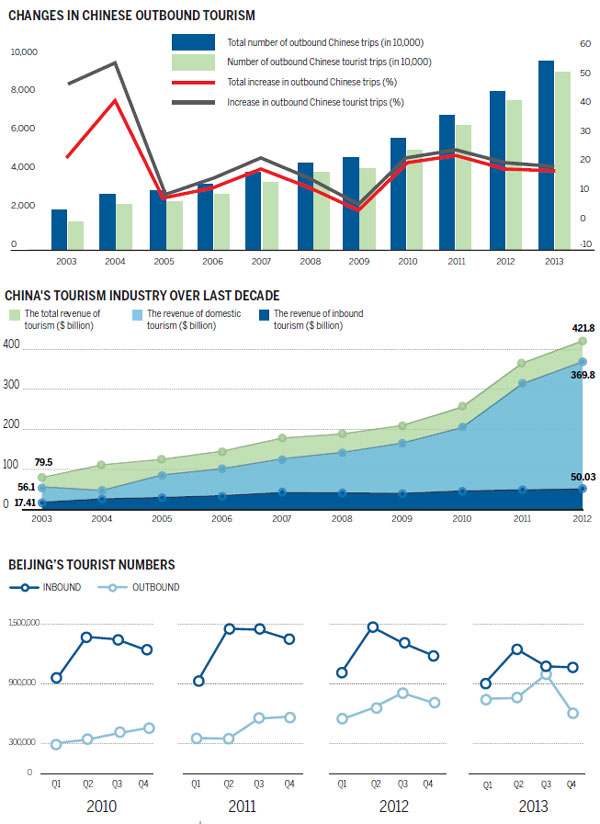
Self-guided tours are increasingly popular among Chinese outbound tourists. Some travelers said they preferred trips that helped them learn more about new places. 67.98% of tourists thought tours based on local culture were most appealing.
79.31% of Chinese tourists wanted official Chinese websites for cities or regions. 53.66% said official Chinese would welcome Weibo and Wechat accounts from tourism boards.
Yesterday, Today and Tomorrow of China’s Outbound Tourism
Chinese outbound tourists have been increasing dramatically, in 2004, there were merely 29 million outbound travelers. The rapid development in China in the past decade created a large population of middle class, who held interest for exploring foreign countries. Besides, many European countries and Asian countries simplified Chinese tourism visa procedures, and expected to attract more rich Chinese tourists.
An increasing number of foreign hotels and shops tried everything to cater to Chinese consumers. For example, a world famous department store Harrods in London revealed that it had hired 70 Chinese speaking staff and installed over 100 Unionpay imprinter/POS.
The total number of China’s outbound travelers reached 54.1 million in the first half of 2014, up 18.7%, with a total spend of over USD 70 billion (YoY 20.7%) according to China Tourism Academy. Chinese oversea traveling is expected to grow by 18.2% this year to reach 116 million person-trips spending up by 20% to USD 155 billion.
WTO estimates that 100 million Chinese tourists will travel outside China by 2020.
Continue reading on Chinese Luxury Travelers.